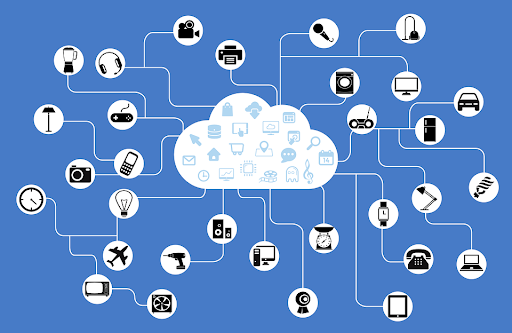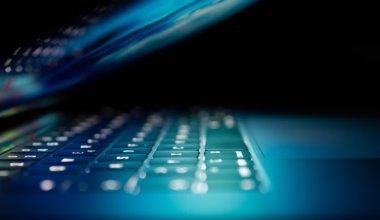Technology is everywhere, and it is changing the way we live, research, learn, and work! In recent decades, we have witnessed a technological revolution on a scale comparable to the transition from the Middle Ages to the Modern World. The deeper technological development, on the other hand, may have only just begun; the virtual and physical worlds are merging into the internet of Things.
The Internet of Things (IoT) in Education has also seen eager entrants, whether it’s flipped classrooms, AR and VR-based smart boards, or access to safe learning spaces. The Internet of Things has already had a significant impact in fields such as education and customer service. According to a study conducted by Markets and Markets Research Pt. Ltd, the global education IoT market is expected to grow from $4.7 billion in 2018 to 11.2 billion by 2023, at a CAGR of 18.5%.
Education will be impacted as schools make better use of connected devices, including those developed by IoT Development Company in UAE. The internet of things is continuing to enter the education sector, and students, educators, and administrators are working together more closely to gain insights from data.
So, how exactly can IoT impact this field? Let’s take a closer look!
The Implications of IoT in Education
While technology is becoming more prevalent, particularly in mobile devices, most educational institutions must still actively integrate it into learning. Except for research projects, most institutions have yet to be reached and interconnected, and few teachers share information. Technology must be widely adopted in order for the Internet of Things to be fully realized and students to engage in more authentic and relevant education outside of the classroom.
Aside from online tutorials and interactive classes, educational technology is progressing toward greater transformation with the help of the Internet of Things. Some examples are as follows:
- AI-Powered
AI researchers collaborated to accelerate the innovation cycle through research. Artificial intelligence (AI) and machine learning (ML) can be used to connect databases, analyze research data, and gain insight or information to improve the study.
- Enhancing Overall Efficiency
Using IoT to streamline school operations allows teachers to focus more on actual teaching tasks by reducing the time and effort required to manually execute these practices. For example, connected devices that automatically detect students can eliminate the need for manual attendance and information delivery at a central office, as well as time-consuming tasks. RFID technology may be used to track the location of laboratory equipment, projectors, and other such tools for increased efficiency. IoT can also help schools cut energy costs by closely monitoring energy usage.
- Enhanced Global Networking Among Educators and Students
Students can now communicate with peers, teachers, and educators all over the world while sitting in the comfort of their own home or classroom by using connected devices such as digital highlighters and interactive boards. Digital scanners assist in knowing when text is moved directly to smartphones via smartphones. Similarly, interactive panels facilitate and accelerate learning by facilitating information receipt, reception, and reciprocation.
Students in class can thus use these devices to interact with educators, mentors, and peers all over the world.
Also Read: Which Blockchain Technology Should You Use In Dubai
- Increasing Campus Security
Schools can track students, staff, and visitors using digitized wristbands and identity cards. Information from the last known locations is stored on a server, ensuring that only the appropriate people are reached in every location on campus. To prevent fraud and theft, it also accepts cashless payments via digital wallets. Cards and wristbands are examples of digital wallets that allow for payment without the use of cash.
The GPS-enabled bus tracking system allows students to travel to and from school while also allowing parents to know where their children are.
- Connected / Smart Classrooms
AR-enabled smart boards in a smart classroom display enriched videos on the topics being discussed. Students get an immersive experience by wearing VR headsets. All of these tools are linked to the personal devices of students and teachers in a linked classroom.
As the education progresses, the instructor will automatically load assignments and projects onto his students’ computers, frequently by simply speaking the words assignment, task, or project.
- Enhanced School Management Efficiency
The Internet of Things allows teachers and school administrators to focus more on education by streamlining daily operations. This enables them to automate tasks that would otherwise take time and effort to complete manually. For example, connected devices can monitor students’ attendance at school, eliminating the need for students to manually attend and report the information to a central office. RFID technology is also used to track school resources such as projectors and laboratory equipment. The Internet of Things also aids in energy cost reduction through energy management.
Quick Response (QR) codes have been added to the schoolbooks as a supplement to Enhanced Textbooks. Students may check these codes on their smartphones in addition to the assignment and feedback.
- Extensive Data Collection and Analysis Learning Experience
Students are now using Radio Frequency Identification (RFID) chips to tag and track physical objects, including birds and animals, around the clock, regardless of weather or other conditions, and schools have begun to use cloud-based applications to automate data analysis.
Students benefit from a more comprehensive education because they can learn about topics that they would otherwise only know from textbooks in real time. As a result, the Internet of Things is transforming the education industry by promoting, speeding up, and making learning safer.
- AI-Assisted Research
Successful researchers have always collaborated to foster creativity by learning from one another. AI and machine learning can be used to connect databases, analyze research data, and gain insights that stimulate further research. Scientists can better focus on research as these integrated systems take over the interconnected systems.
Also Read: Top 10 IoT Development Companies in Dubai, United Arab Emirates
Wrapping Up
IoT has the potential to have a significant impact in a wide range of areas, including logistics, customers, healthcare, and many others. Given the projections for IoT development, the IoT network has the potential to cause major disruptions in the field of education. Some experts believe that around 20 billion things will come together by 2020, while others estimate growth to be in the 40-50 billion range.



